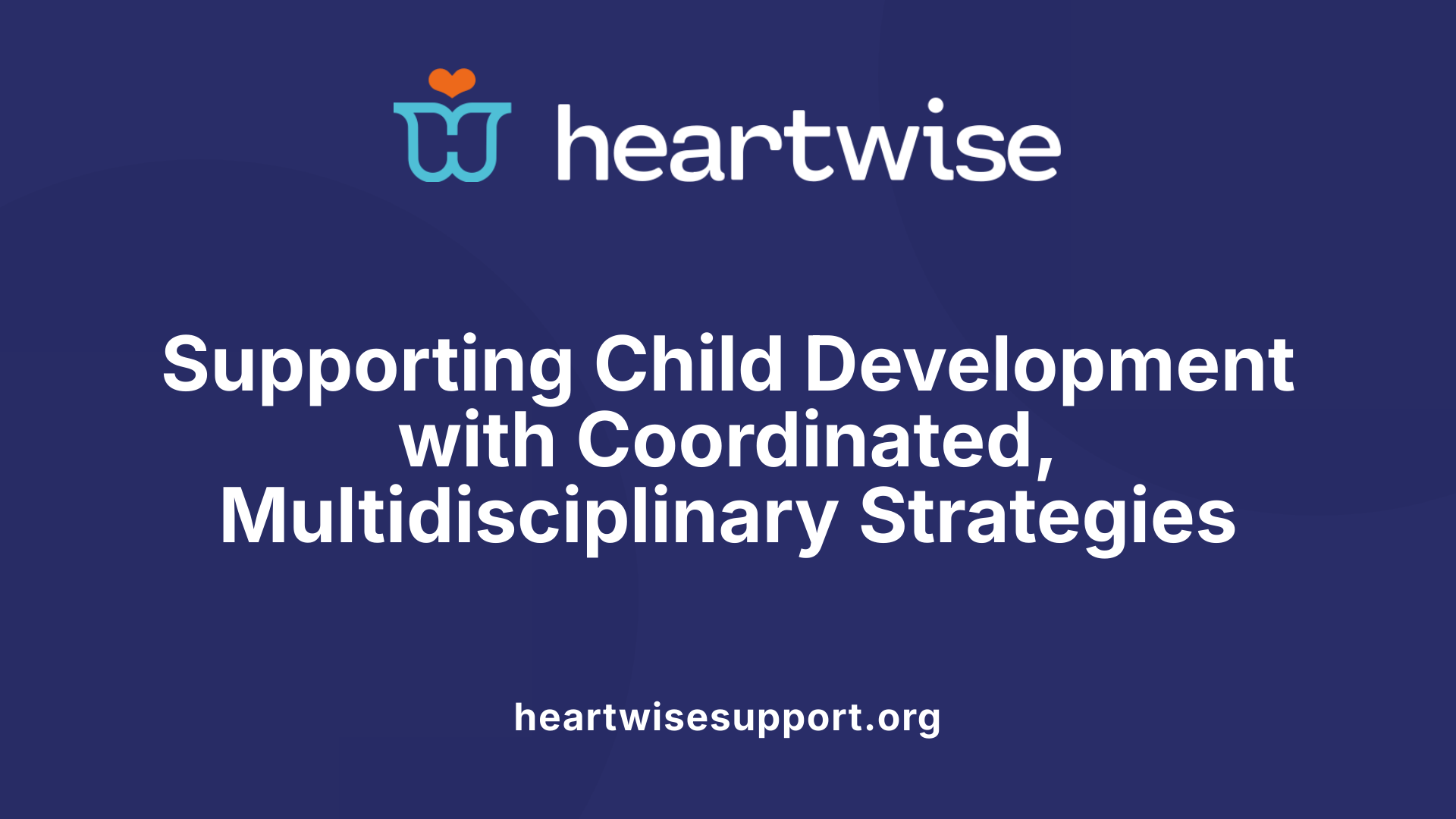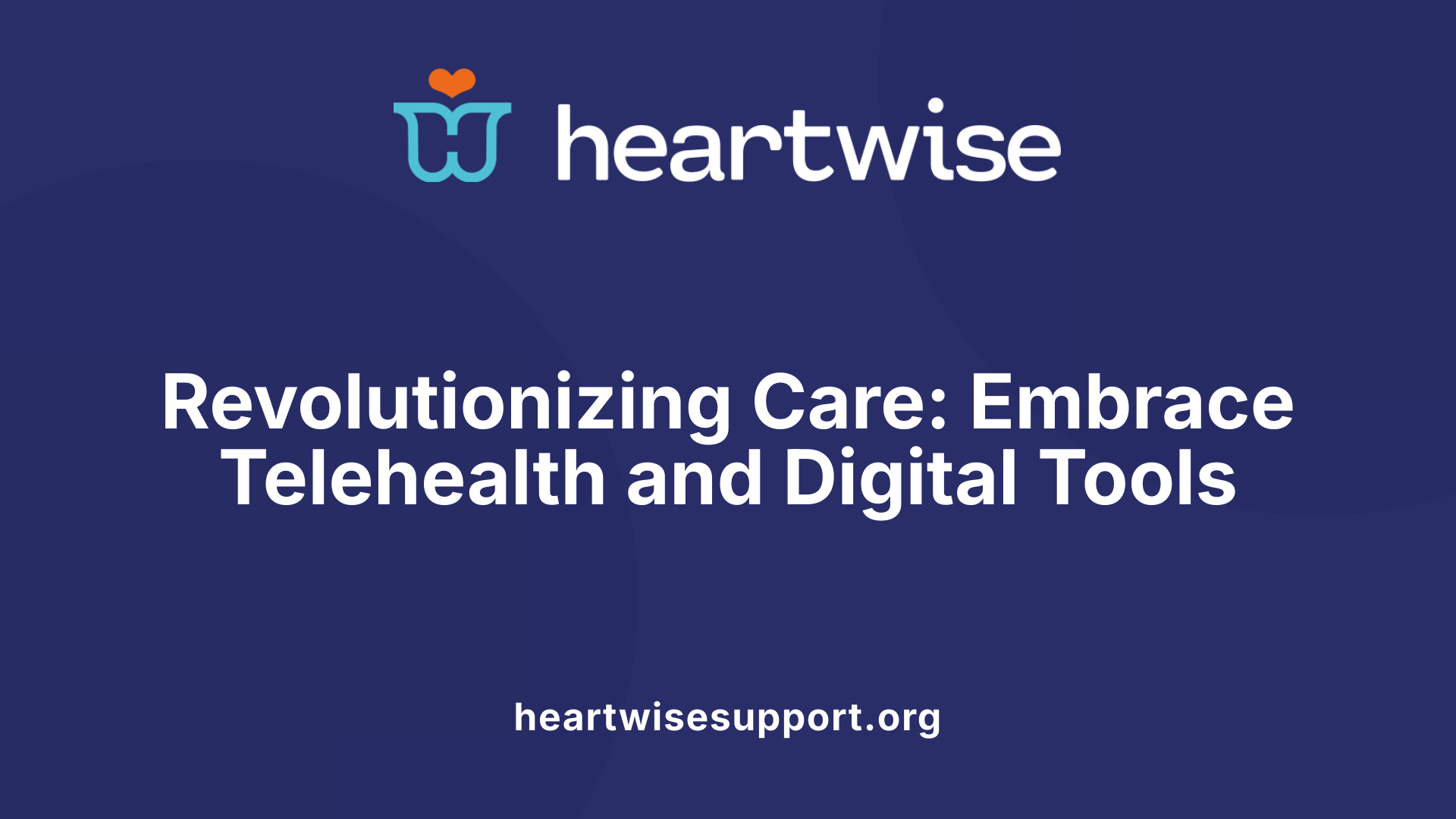Understanding Multidisciplinary Therapy Approaches
Multidisciplinary therapy approaches are collaborative efforts involving various health professionals working together to provide comprehensive care tailored to individual needs. This method is applied across many fields, including pediatric development, pain management, and chronic illness treatment, emphasizing the importance of integrated expertise to optimize outcomes.
Defining the Multidisciplinary Approach in Therapy

What is a multidisciplinary approach to therapy?
A multidisciplinary approach in therapy involves the collaboration of professionals from various fields working together to support a child's development. For example, it may include Behavior Analysts, speech therapists, occupational therapists, and physical therapists. Each professional brings their specialized knowledge and skills, and together, they develop a comprehensive, personalized care plan.
This method ensures that different developmental areas—such as speech, motor skills, behavior, and sensory processing—are addressed simultaneously. By integrating multiple perspectives, therapy becomes more holistic, effectively tackling multiple challenges at once.
Regular communication among team members guarantees cohesive intervention strategies. This coordination not only improves the child's progress but also helps in seamlessly transitioning between different therapy focuses, avoiding overlaps or gaps.
In essence, a multidisciplinary approach is about working collectively to enhance the overall development and well-being of the child through shared expertise and coordinated efforts.
What is the primary goal of a multidisciplinary approach?
The main aim of a multidisciplinary approach is to create a unified and comprehensive treatment system. It combines the insights, skills, and strategies of various professionals to offer a well-rounded support structure.
This system targets complex developmental and health issues by addressing them from multiple angles. It allows for a thorough assessment of the child's needs, ensuring that therapies are tailored specifically to individual strengths and challenges.
Such collaboration fosters innovation, as different disciplines bring unique methodologies and problem-solving techniques to the table. It also enhances communication across providers, leading to more effective and efficient therapy progress.
Ultimately, the goal is to promote the child's overall growth, learning, and health, ensuring they receive the best possible support to reach their potential. This tailored, collaborative effort often results in faster progress, better outcomes, and increased satisfaction for families.
Roles of different professionals involved
In multidisciplinary therapy teams, various specialists work together, each contributing their expertise:
- Behavior Analysts use Applied Behavior Analysis (ABA) to assess behaviors, identify their functions, and develop strategies for positive change.
- Speech Therapists focus on improving communication, language, voice, and swallowing issues.
- Occupational Therapists support daily living skills, motor development, and adaptive behaviors.
- Physical Therapists work on mobility, strength, and coordination.
Supplementary roles can include psychologists, dietitians, and other specialists, depending on the child's needs. Each professional conducts assessments, sets specific goals, and implements interventions aligned with the child's developmental profile.
Through ongoing collaboration, these experts ensure interventions are complementary, reinforce each other's work, and adapt to the child's evolving needs.
Importance of collaboration in therapy
Collaboration is the cornerstone of successful multidisciplinary therapy. It ensures that all team members are aligned and working toward shared objectives. Open communication helps in tracking progress, adjusting interventions, and avoiding conflicting strategies.
This collaborative environment fosters trust and respect among professionals, encouraging the sharing of insights and innovations. It also facilitates a supportive atmosphere where challenges are addressed collectively.
For the child and family, collaborative therapy means receiving consistent messages, cohesive strategies, and a sense of being supported from multiple angles. It reduces confusion and overload, making therapy sessions more effective.
Technologies like telehealth play a significant role in enhancing collaboration, especially for remote or mobility-limited children. They enable real-time consultation and teamwork regardless of geographical barriers.
In sum, collaboration among diverse professionals amplifies the effectiveness of therapy, promotes holistic development, and leads to more positive outcomes for children.
Key Benefits of Multidisciplinary Therapy

What are the benefits of a multidisciplinary therapy approach?
Multidisciplinary therapy involves a team of diverse healthcare professionals working together to provide comprehensive care. This collaborative effort brings together expertise from various fields such as physical therapy, speech-language pathology, behavior analysis, occupational therapy, and medical specialties. The result is an integrated treatment plan tailored to each child's unique needs.
One prominent benefit is enhanced safety and improved clinical outcomes. Effective teamwork reduces the risk of errors, promotes consistent treatment protocols, and helps achieve better health results. This includes faster recovery, shorter hospital stays, and decreased chances of complications.
Furthermore, multidisciplinary care fosters better communication among providers. Regular collaboration ensures all professionals are aligned on goals, progress, and adjustments, providing a seamless experience for children and their families.
This approach also addresses co-occurring conditions more effectively. For example, behavioral challenges alongside sensory or motor issues can be managed within a single, cohesive plan, leading to holistic development.
Patients and caregiver satisfaction tend to increase as well. Families benefit from consistent updates, clear care pathways, and supportive guidance. The comprehensive nature of this care reduces the stress of coordinating multiple services and improves overall confidence in treatment.
Research supports these advantages, showing that multidisciplinary strategies often lead to reduced hospital stays and lower complication rates. Such approaches foster a safer, more efficient, and more effective healthcare environment.
How does multidisciplinary care improve patient outcomes?
Studies reveal that integrating multiple healthcare disciplines results in better patient health outcomes. Notably, the approach minimizes hospital readmissions and complications by ensuring continuous, coordinated care. This integration enables personalized treatment plans that consider physical, mental, and emotional aspects of health.
By encouraging open communication among providers, multidisciplinary teams ensure that interventions are well aligned and that any changes in the child's condition are promptly addressed. This comprehensive oversight supports more effective management of complex conditions, enhancing overall recovery chances.
Children receiving such care often demonstrate improved development across different domains—speech, motor skills, behavioral health—because interventions are synchronized to support interconnected areas of growth.
Ultimately, multidisciplinary care promotes a culture of collaboration that benefits not only clinical outcomes but also fosters positive experiences for children, families, and providers. This comprehensive approach maximizes the potential for successful, lasting improvements in health and development.
Roles and Responsibilities of Healthcare Professionals
What are the specific roles of team members in a multidisciplinary team?
In a multidisciplinary team, each member contributes their specialized expertise to support the overall goal of comprehensive care or therapy. For example, speech-language pathologists focus on communication and swallowing disorders, while occupational therapists support daily living skills and environmental adaptations. Physical therapists work on motor skills and mobility, and ABA providers implement behavior change strategies, especially in developmental or behavioral challenges.
In healthcare settings like oncology or cardiology, doctors such as oncologists or cardiologists develop diagnostic and treatment plans, supported by radiologists, nurses, dietitians, and mental health providers who address physical, nutritional, emotional, and psychological needs.
In substance use disorder treatment, teams may include physicians, nurses, addiction counselors, psychiatrists, and recovery mentors who collaboratively design detox plans, therapy schedules, and aftercare programs.
Across all disciplines, professionals coordinate their roles to create a seamless and personalized approach that addresses each aspect of a patient's or child's needs.
Why is mutual respect and communication important?
Effective teamwork hinges on mutual respect and open communication. When team members value each other's expertise, collaboration becomes more productive and cohesive. Respect fosters a positive environment where professionals feel valued, motivated, and willing to share their insights.
Clear communication ensures that information about patient progress, treatment adjustments, or new challenges is accurately shared among all members. This unified information flow minimizes errors, prevents duplicated efforts, and ensures everyone works towards the same objectives.
In pediatric therapy, this approach helps supervisors and therapists align goals across speech, occupational, and physical therapy, facilitating consistent, incremental progress.
How does leadership and team coordination contribute to success?
Strong leadership provides direction, clarifies responsibilities, and maintains focus on shared goals. Leaders in multidisciplinary teams serve as coordinators, ensuring that each professional’s efforts are aligned and that communication remains transparent.
Effective team coordination involves scheduling regular meetings, utilizing shared electronic health records, and establishing protocols for decision-making and progress review. This structure guarantees that interventions are complementary and adaptable to changing needs.
Leadership also fosters a culture of continuous learning and accountability, encouraging team members to contribute their insights and support each other.
What is necessary for a multidisciplinary team approach to be effective?
For a multidisciplinary team approach to succeed, several factors are crucial. First, clear and open communication is essential for understanding shared goals and coordinating efforts.
Mutual respect and appreciation of each member's unique skills promote a trusting, collaborative environment. Recognizing and valuing each professional's contribution strengthens team cohesion.
Shared purpose and aligning goals ensure that the team works unitedly toward the best outcomes. Cultivating an open-minded attitude and willingness to learn across disciplines helps integrate diverse perspectives and develop innovative solutions.
Leadership that models organizational values and fosters a positive, accountable environment supports ongoing collaboration. Regular updates, case reviews, and feedback loops further enhance team synchronization.
In essence, these elements combine to create a cohesive, efficient team capable of delivering patient-centered or child-centered outcomes with improved quality and safety.
Application in Pediatric Care and Development

How is multidisciplinary therapy applied in pediatric care?
A multidisciplinary approach in pediatric therapy combines speech therapy, occupational therapy, and physical therapy to provide comprehensive support for child development. This method involves a thorough assessment of all developmental areas, including communication, motor skills, and sensory integration, to create personalized intervention plans suited to each child's unique needs.
Therapists from different disciplines collaborate closely, aligning their goals to address interconnected challenges across developmental domains. Regular communication ensures that care remains cohesive, allowing for adjustments in strategies as the child's needs evolve.
Transitions between different therapy sessions are designed to be seamless, supporting continuous growth and progress. For example, improvements in motor skills can enhance speech and feeding abilities, emphasizing the interconnected nature of developmental areas.
Family involvement plays a crucial role in this approach. Caregivers receive coaching and resources to reinforce therapeutic goals at home, making therapy a consistent and integrated part of daily routines. Ongoing monitoring and assessment ensure that interventions remain effective and adjustments are made in response to developmental milestones.
This comprehensive, team-based strategy not only addresses current challenges but also supports long-term development, helping children reach their full potential.
Transforming Substance Use Disorder and Pain Management
How do multidisciplinary approaches aid in substance use recovery and pain management?
A multidisciplinary strategy in treating substance use disorder (SUD) and managing pain involves assembling a team of specialists from diverse fields to address all aspects of the patient's condition. For SUD, this team typically includes medical doctors, addiction counselors, psychiatrists, occupational therapists, dietitians, and recovery mentors. These professionals collaborate to develop personalized treatment plans that incorporate medication-assisted treatment, behavioral therapies such as cognitive-behavioral therapy (CBT), and holistic approaches including lifestyle modifications.
The goal is to address not just the addiction but also underlying mental health issues, co-occurring psychiatric conditions, and social factors impacting recovery. Using evidence-based techniques, the team continuously monitors progress through regular assessments and adjusts treatment strategies accordingly. This ongoing communication ensures that all areas influencing recovery are targeted, increasing the likelihood of sustained sobriety.
In pain management, multidisciplinary therapy combines physical therapy, acupuncture, manual medicine, and sometimes naturopathy to identify the root cause of pain rather than merely alleviating symptoms. For example, in chronic headaches, acupuncture may be combined with physical therapy to improve movement and reduce pain intensity. This comprehensive approach helps diminish dependence on opioids and other medications prone to tolerance and addiction.
By integrating these various modalities, patients experience long-term relief, improved functionality, and a better quality of life. Taking steps to reduce medication reliance through alternative therapies also minimizes the risk of side effects and dependency. Overall, these collaborative efforts foster safer, more effective treatment outcomes and promote sustainable recovery from substance use and chronic pain conditions.
Innovations and Technologies Supporting Multidisciplinary Care

How do telehealth and remote consultations enhance multidisciplinary care?
Telehealth has become an indispensable tool in expanding access to multidisciplinary healthcare. Through video calls, secure messaging, and remote monitoring, various specialists—such as speech therapists, occupational therapists, physical therapists, and medical doctors—can collaborate effectively regardless of geographical barriers.
This technology enables children in rural or underserved areas to receive comprehensive care without the need for extensive travel. Remote consultations also facilitate regular follow-ups, quick adjustments to treatment plans, and ongoing communication among team members. As a result, children benefit from timely interventions, consistent monitoring, and coordinated support.
Moreover, telehealth supports family involvement, allowing caregivers to participate actively in therapy sessions and receive guidance in real-time, which improves adherence and outcomes.
How do electronic health records and sharing information streamline multidisciplinary efforts?
Electronic health records (EHRs) play a vital role in enabling seamless communication among healthcare providers. Shared digital platforms ensure that all team members have immediate access to the child's medical history, assessments, progress notes, and treatment plans.
This instantaneous sharing minimizes redundant testing, reduces errors, and promotes a unified approach. For example, when an occupational therapist updates progress, speech therapists can adjust their strategies accordingly, supporting a cohesive developmental plan.
EHRs also facilitate interdisciplinary case reviews and enable data-driven decision-making, ultimately leading to more personalized and effective care.
What role do patient engagement and education tools play?
Empowering families through education enhances treatment effectiveness. Digital tools such as patient portals, mobile apps, and interactive websites provide valuable resources about conditions, therapy goals, and home activities.
These platforms encourage active participation, improve communication, and help caregivers track progress and adhere to therapy routines. For children with chronic conditions or complex needs, engaging tools can demystify medical procedures and reduce anxiety.
Furthermore, tailored educational content supports informed decision-making and fosters a collaborative relationship between families and healthcare teams.
What are future trends in interdisciplinary collaboration?
Looking ahead, advancements like artificial intelligence (AI) and machine learning promise to further enhance multidisciplinary care. These technologies can analyze vast amounts of data to identify patterns, predict outcomes, and recommend personalized interventions.
Integrating virtual reality (VR) and augmented reality (AR) into therapy sessions offers immersive experiences that motivate children and improve engagement.
Additionally, the development of integrated care platforms will facilitate real-time collaboration, automatic documentation, and streamlined workflows. These innovations aim to make interdisciplinary teamwork more efficient, precise, and responsive.
As technology continues to evolve, the focus remains on creating patient-centered, accessible, and holistic care environments that harness digital tools for better health outcomes.
| Technology Type | Benefits | Examples |
|---|---|---|
| Telehealth | Expands access, supports family involvement | Video consultations, remote monitoring |
| EHR Systems | Promotes seamless communication, reduces errors | Shared patient records |
| Patient Engagement Tools | Improves adherence, enhances understanding | Mobile apps, educational portals |
| Future Innovations | Personalized care, immersive therapy | AI, VR, AR |
Embracing these technological advancements supports a more integrated, effective, and accessible approach to multidisciplinary healthcare.
Maximizing Outcomes Through Collaborative Efforts
A multidisciplinary therapy approach harnesses the strengths of diverse professionals, fostering comprehensive, patient-centered care that improves health outcomes, reduces risks, and enhances satisfaction. Effective communication, mutual respect, and shared goals are vital. As healthcare continues to evolve with technological innovations, embracing multidisciplinary collaboration remains essential for delivering the highest quality care and achieving lasting positive impacts for patients across all fields of medicine.
References
- The Benefits of Multidisciplinary Care - Compleatkidz
- Challenges and Benefits of a Multidisciplinary Approach to ...
- The Benefits of a Multidisciplinary Healthcare Approach
- The Power of a Multidisciplinary Approach in Pediatric Therapy
- What Is Multidisciplinary Therapy? Treatment & Approach
- Multidisciplinary Teaming: Enhancing Collaboration through ...
- The Benefits of a Multidisciplinary Approach to Pain Management
- Why Multidisciplinary Therapy is a Game-Changer for Your Child











